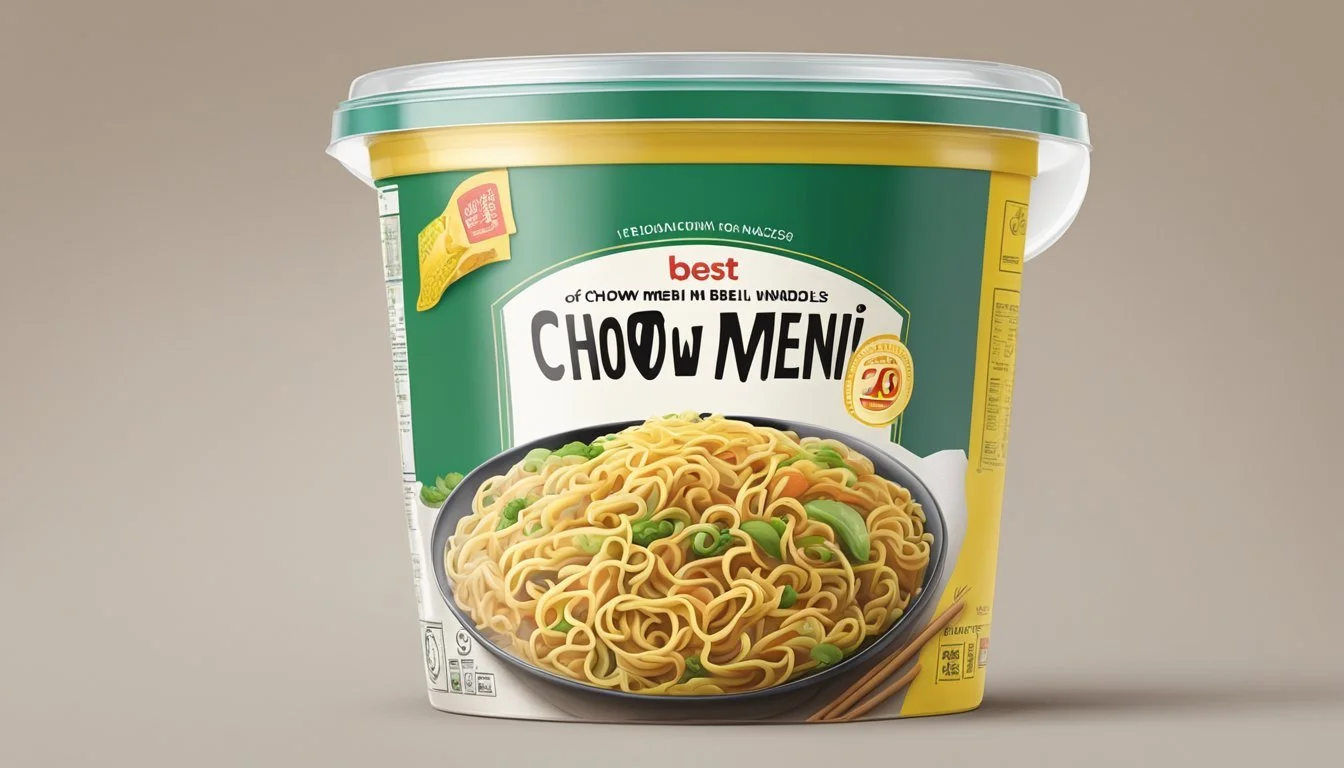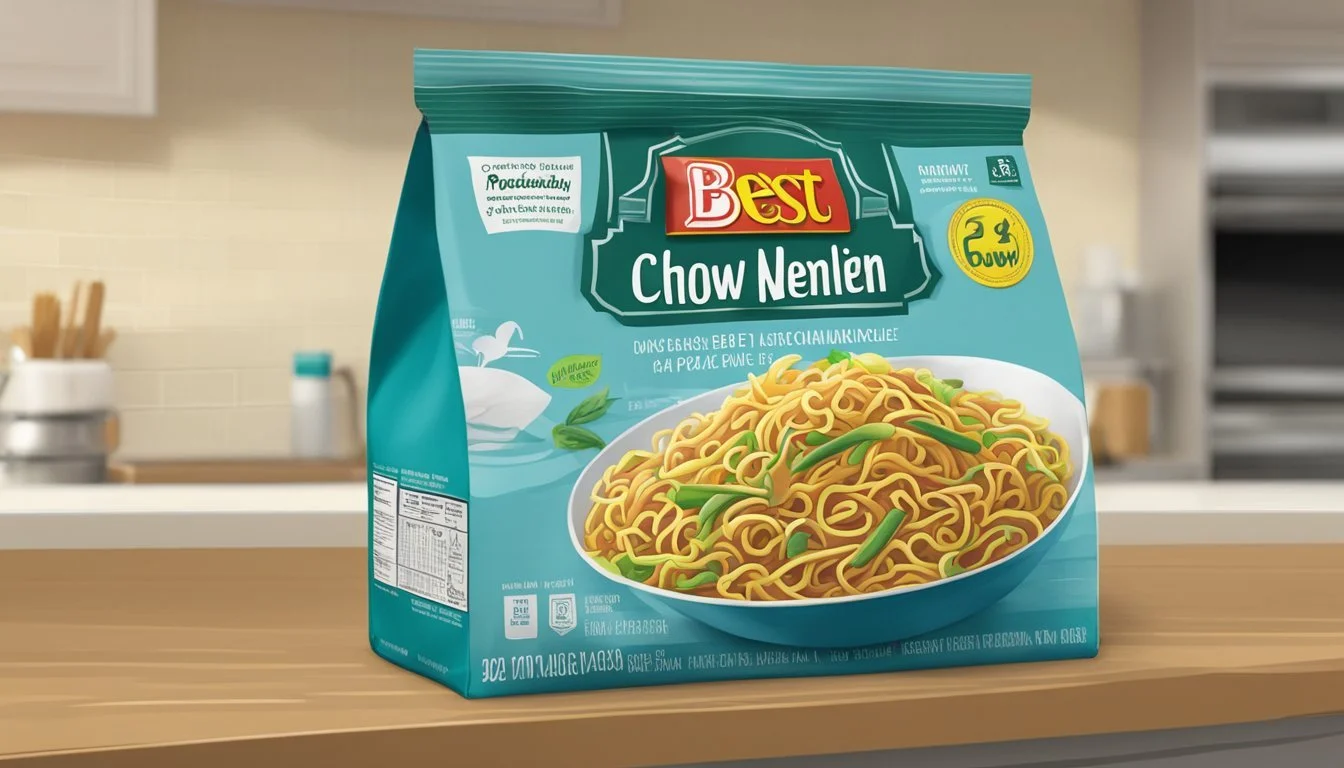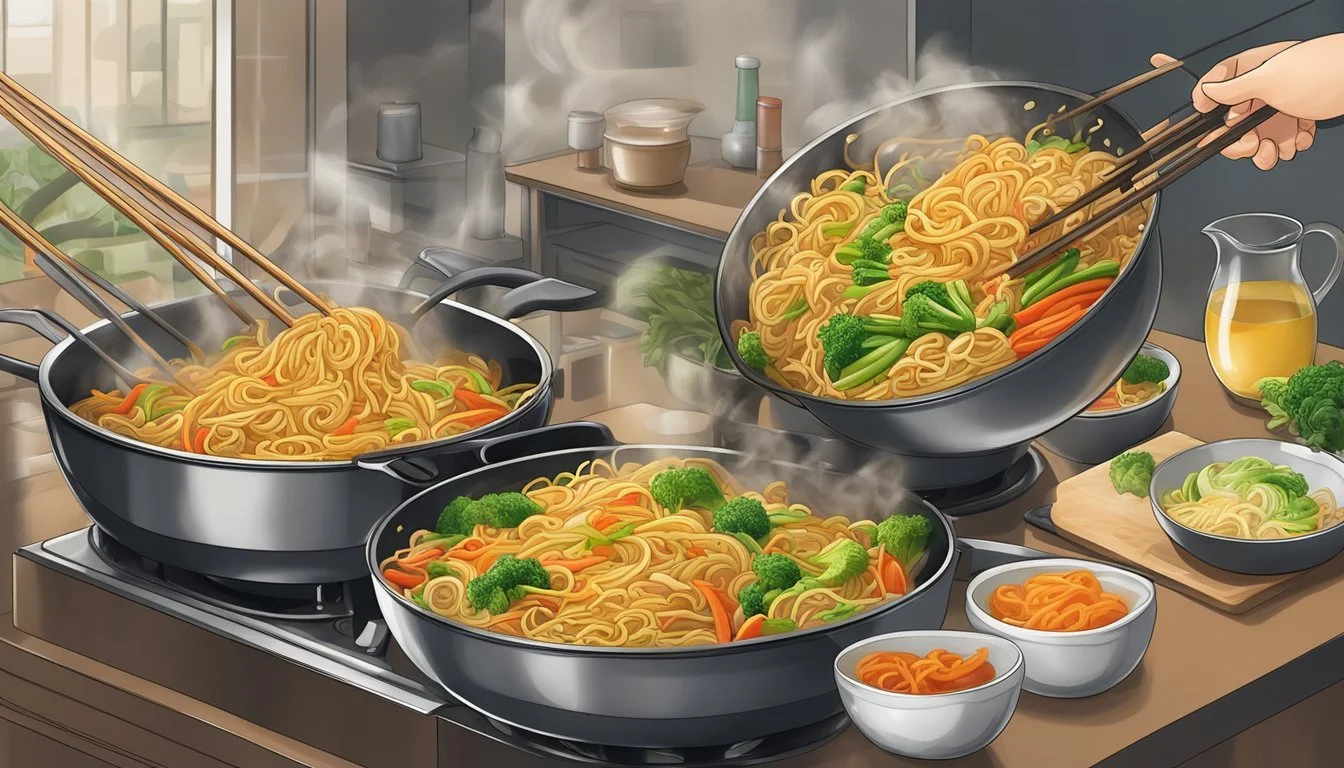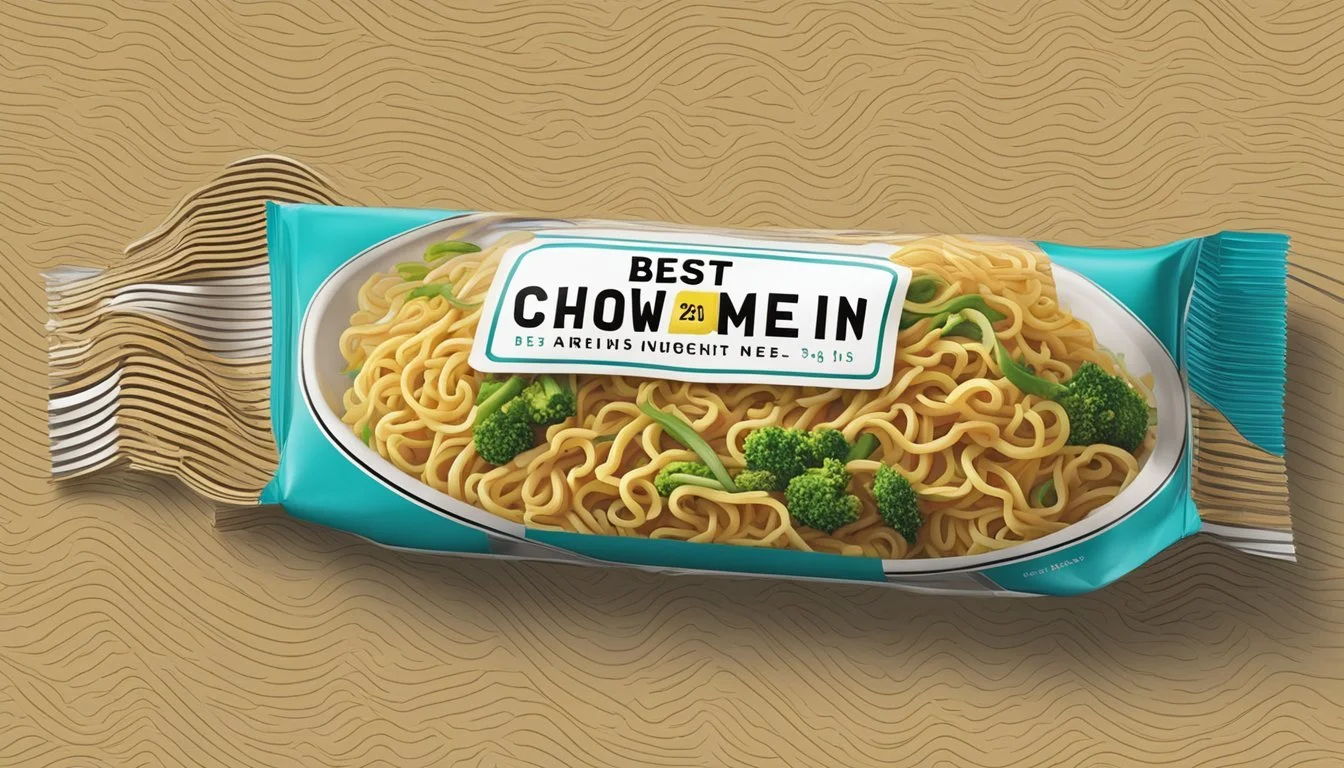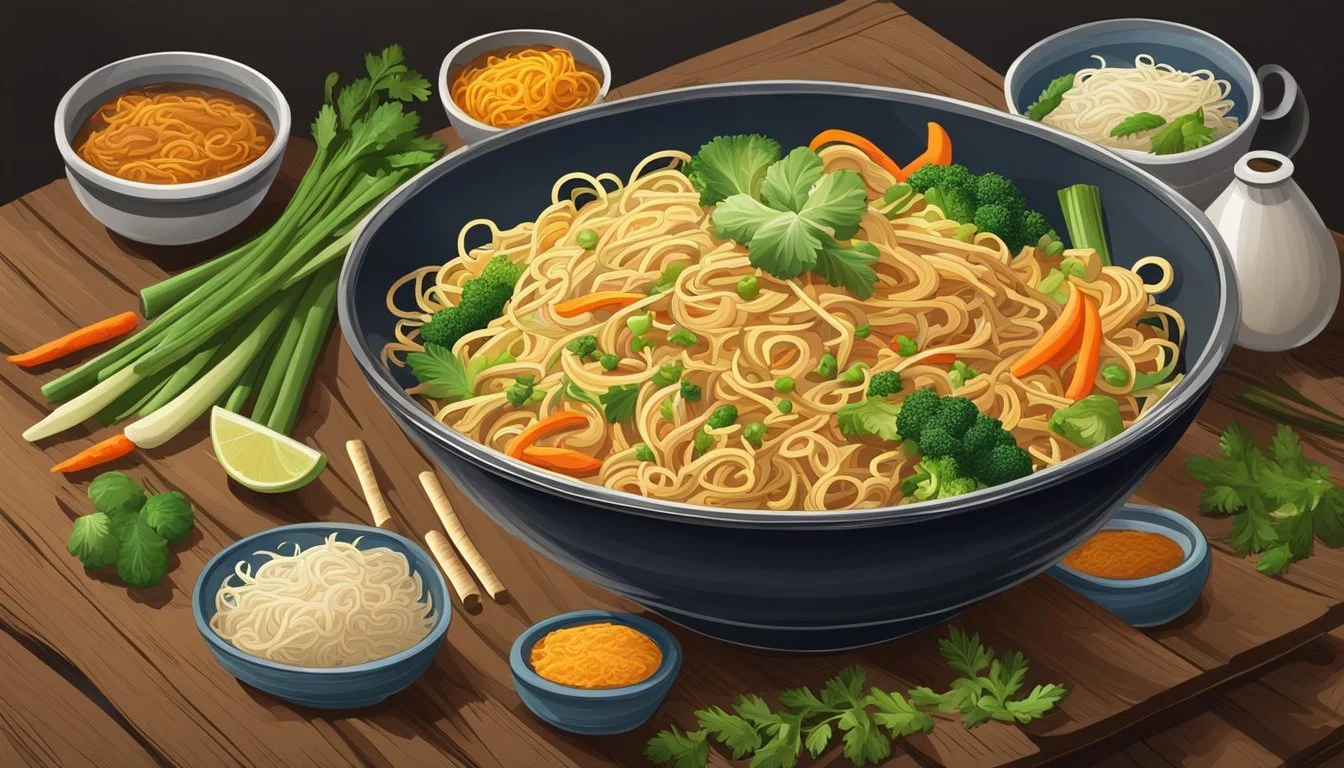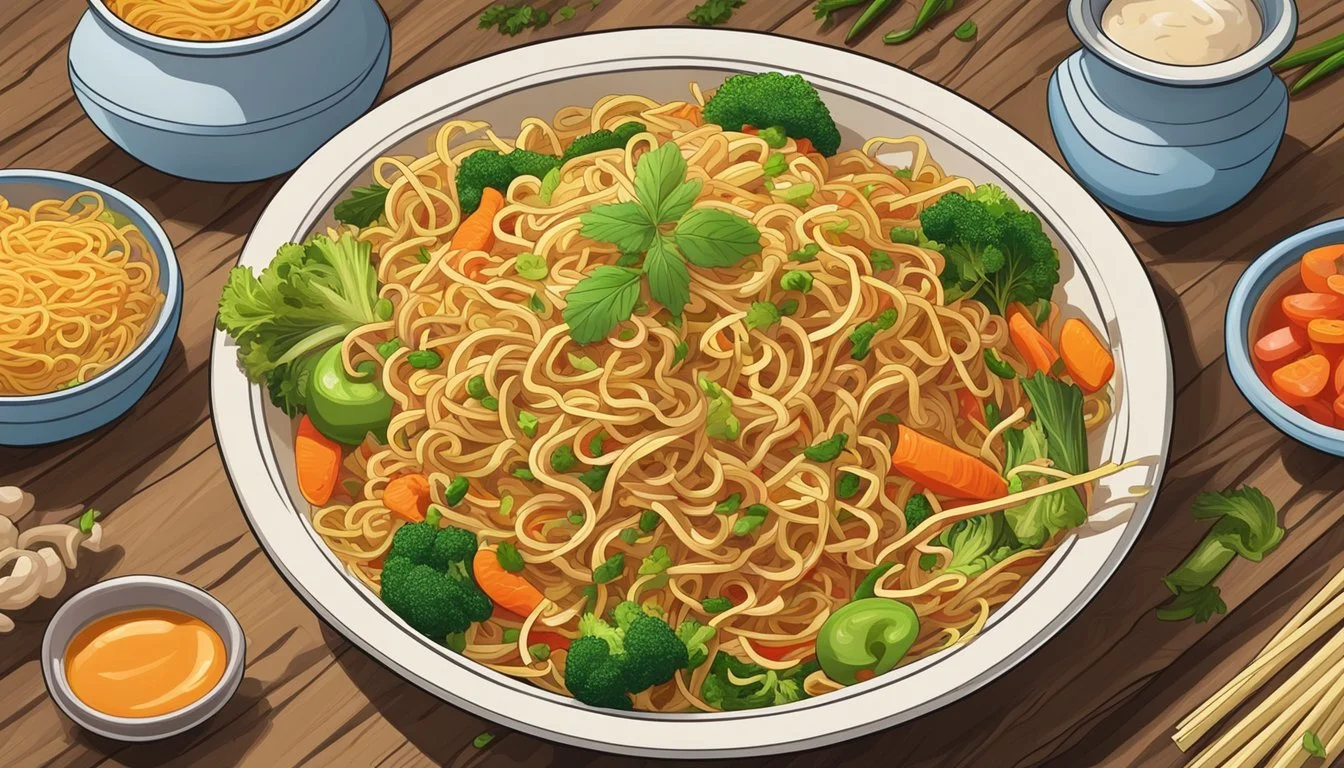How Long Do Chow Mein Noodles Last?
Shelf Life and Storage Tips
Chow mein noodles, a staple in Asian cuisine, are versatile and can be found in both fresh and dried forms. Fresh chow mein noodles, commonly used in stir-fries and other quick-cooking dishes, typically last for a few days when refrigerated. They should be stored in an airtight container and kept in the fridge to maintain their freshness. In contrast, dried chow mein noodles boast a significantly longer shelf life due to the dehydration process they undergo during production. When stored in a cool, dry place, they can last for up to two years, making them a convenient pantry item for many households.
The longevity of chow mein noodles once cooked depends largely on how they are stored. To ensure the safety and quality of leftover chow mein, it should be refrigerated within two hours of cooking. Properly sealed, these noodles can last for three to four days in the refrigerator. It's important to perform a smell check before consuming refrigerated leftovers to avoid food-borne illnesses that can result from eating food that has been stored for too long.
Understanding Chow Mein Noodles
Chow Mein is a versatile noodle dish that has various interpretations worldwide. It primarily consists of noodles made from wheat flour and egg, which are then stir-fried with a selection of meats, vegetables, and sauces.
Types of Chow Mein Noodles
Chow mein noodles can be categorized into two types:
Fresh Chow Mein Noodles: These are often thicker and softer than dried noodles. They resemble fresh lo mein noodles but are typically stir-fried to a crispier texture.
Dried Chow Mein Noodles: Shelf-stable and have a longer shelf life. They need to be rehydrated or boiled before cooking.
Other similar Asian noodles include rice noodles (how long do rice noodles last?), which are thinner and made from rice flour (how long does rice flour last?); ramen noodles (how long do ramen noodles last?), which are also wheat-based and often served in broth; and yakisoba noodles, which are similar to chow mein but are used in Japanese cuisine.
Key Ingredients in Chow Mein
The primary ingredients found in chow mein noodles are:
Wheat Flour: Provides the structure and chewiness associated with chow mein noodles.
Egg: Adds richness and color, and helps in binding the noodles together.
Furthermore, chow mein dishes may include variations using egg noodles (how long do egg noodles last?), wheat noodles, or uncooked Chinese noodles that are prepped and cooked according to the dish's requirements. The noodles' texture and flavor can be enhanced by how they are incorporated with the other components of the dish.
Storing Chow Mein Noodles
Proper storage of chow mein noodles is critical for maintaining their freshness and extending their shelf life. Chow mein noodles can last in the refrigerator for 3-4 days, and freezing can prolong their usability.
Refrigeration and Storage Tips
Chow mein noodles should be kept in the refrigerator within two hours of cooking to ensure their safety and quality. For optimal freshness, one should place the noodles in airtight containers to prevent moisture and other contaminants. The recommended storage time is between 3 to 4 days.
Avoiding Spoilage: Refrigerate promptly to inhibit bacterial growth.
Maximizing Freshness: Seal in airtight containers to maintain taste and texture.
Freezing Chow Mein Noodles
Freezing chow mein noodles can extend their shelf life beyond the typical refrigeration window. One must ensure to use proper freezer-safe containers or heavy-duty freezer bags for storage. Noodles can be kept in the freezer for up to 2 months, however, it’s important to label the containers with the expiration date to track how long the noodles have been stored.
Preparation for Freezing: Allow noodles to cool before packingto prevent ice crystals formation.
Preventing Freezer Burn: Wrap tightly and remove as much air as possible.
Shelf Life of Chow Mein Noodles
Chow Mein noodles, a staple in many Asian dishes, vary in shelf life depending on their form—fresh or dry. The presence of preservatives, storage conditions, and the expiration date all play pivotal roles in determining how long these noodles remain good to use.
Fresh vs Dry Chow Mein Noodles
Fresh Chow Mein Noodles: Typically found in the refrigerator section, fresh Chow Mein noodles have a shorter shelf life. They should be stored in their original sealed package in the refrigerator and are best if used within a few days of opening. Unopened, they can last approximately one week, although it's essential to check the expiration date.
Shelf life when opened: A few days
Shelf life unopened: About a week
Dry Chow Mein Noodles: Dry noodles have a significantly longer shelf life due to low moisture content which is less prone to bacterial growth. Unopened and stored in a cool, dry place, they can last up to 2 years. Once opened, maintaining an airtight container is crucial for prolonging their usability.
Shelf life unopened: Up to 2 years
Shelf life opened: Best if used within one year
Factors Affecting Shelf Life
Several factors affect the shelf life of Chow Mein noodles, both fresh and dry.
Storage Conditions: Temperature, humidity, and exposure to air influence the noodles' viability. Fresh noodles require refrigeration, while dry noodles need a cool, dry environment.
Preservatives: Some types of Chow Mein noodles, like those from La Choy, do not contain preservatives or artificial colors, which may influence the shelf life compared to brands that do include preservatives.
Expiration Date: It is a crucial indicator provided by the manufacturer. While some dry noodles can be safe to consume past this date, the quality may diminish.
Bacteria: Fresh noodles are more susceptible to bacteria and should be consumed quickly once opened. Dry noodles are less hospitable environments for bacteria, but they should still be stored properly.
By understanding these specifics, one ensures the quality and safety of Chow Mein noodles in their kitchen.
Preparation and Cooking
Preparing and cooking chow mein noodles correctly is crucial to achieve the perfect texture and flavor. The process generally involves boiling followed by stir-frying or frying to incorporate various ingredients for a savory dish.
Proper Techniques for Cooking Noodles
To cook chow mein noodles, one must first bring a large pot of water to a rolling boil. It's important that the water is at a full boil to ensure the noodles cook evenly. Adding the noodles to the boiling water, they should be cooked according to the package instructions, which usually suggest 2-3 minutes for fresh noodles. To prevent sticking and achieve an even cook, one should use a wooden spoon or spatula to gently separate the noodles during boiling.
Once the noodles are cooked to 'al dente' — tender with a slight resistance in the middle — they should be drained immediately. Rinsing the noodles under cold water stops the cooking process and prevents them from becoming too soft, especially important as they will be cooked again when stir-fried.
Recommended Chow Mein Recipes
A classic chow mein recipe involves a heated frying pan or wok on a stovetop. Once it's hot, cooking oil is added along with the cooked noodles. At this stage, a fierce heat is key to achieving the characteristic 'wok hei' — the slightly smoky flavor of well-made stir-fried noodles.
Here's a brief recommended chow mein recipe in steps:
Prepare the sauce: Combine soy sauce, oyster sauce, a touch of sugar, and, if desired, a splash of Chinese cooking wine for depth of flavor.
Stir-fry the ingredients: Heat oil in a wok or large frying pan over high heat. Add your choice of proteins and vegetables and cook quickly, moving constantly.
Combine with noodles: Add the cooked chow mein noodles to the wok, pour over the prepared sauce, and stir fry everything together until well-coated and hot.
Using the right technique to cook chow mein noodles and following a proper recipe will result in a delicious dish that showcases the versatile nature of these noodles.
Safety and Food Quality
When it comes to chow mein noodles, both safety and quality are crucial factors to consider. Proper storage techniques help maintain the integrity of the noodles, while awareness of spoilage signs can prevent food-borne illnesses.
Identifying Spoilage
Chow mein noodles, when spoiled, exhibit certain characteristics that one should be alert to. Visual changes such as mold growth or discoloration are clear indications that the noodles are not safe for consumption. Additionally, if there is an off-putting smell or the noodles have become slimy in texture, they should be discarded immediately. These are signs of bacterial growth, which can lead to food poisoning.
Preventing Food Poisoning
Food poisoning is often a result of improper food handling and storage. To reduce the risk, cooked chow mein noodles should be stored in the refrigerator within two hours of cooking and kept at a temperature below 40°F (4°C). For prevention, one should adhere to the following storage guidelines:
Refrigerator: Cooked chow mein noodles last for 3-4 days when stored in a sealed container in the refrigerator.
Freezer: For longer storage, chow mein noodles can be frozen, extending their shelf life to several months.
Dry Storage: Uncooked dry chow mein noodles should be kept in a cool, dry place where they can last for up to two years.
By following these practices, one ensures not only the safety but also the quality of chow mein noodles, preventing health risks associated with spoiled foods.
Enhancing Flavor and Nutrition
When preparing chow mein, incorporating varied ingredients not only enhances the dish's flavor profile but also its nutritional content. Selecting the right additions and balancing the meal can transform an ordinary noodle dish into a rich, flavorful, and wholesome meal.
Chow Mein Additions
One can elevate Chow Mein by adding a variety of vegetables such as cabbage, bell peppers, carrots, and green onions. These vegetables not only contribute vitamins and minerals but also texture and color to the dish:
Cabbage: high in vitamin C and K, adds crunch
Carrots: source of beta-carotene, brings sweetness
Green Onions: offers a mild onion flavor
Incorporating proteins such as chicken, beef, or tofu (how long does tofu last?) can boost the nutritional value, providing essential amino acids and protein to the meal:
Chicken: lean protein, contains niacin and phosphorus
Beef: rich in iron and B12, adds savory notes
Tofu: plant-based protein, contains isoflavones
The choice of sauces can deeply influence the flavor. A mix of soy sauce (how long does soy sauce last?), oyster sauce, garlic, and ginger is popular for creating a savory umami base:
Soy Sauce: salty and rich, contains amino acids
Oyster Sauce: sweet and tangy, adds depth
Garlic and Ginger: aromatic, offering potential anti-inflammatory benefits
Balancing Nutrition with Chow Mein
To balance nutrition in chow mein, a conscientious mix of ingredients is key. One should aim for a variety of colors and food groups, ensuring each component contributes to the meal's overall nutritional value:
Protein:
Aim for a proper portion, around 3-4 ounces per serving, to maintain macronutrient balance.
Vegetables:
Fill at least half the plate with a diversity of vegetables for fiber and micronutrients.
Sauces:
Use in moderation to control sodium intake while privileging those rich in flavor such as oyster sauce and soy sauce complemented by fresh garlic and ginger to minimize the need for additional salt.
Remembering these guidelines, one can create a chow mein that not only tastes great but also supports a balanced diet.
Leftovers and Reheating
Proper storage and reheating techniques ensure leftover Chow Mein maintains its taste and texture. Below are specific recommendations for storing leftovers and reheating them efficiently.
Storing Leftover Chow Mein
Leftover Chow Mein should be stored in the refrigerator within two hours of cooking to maintain food safety. It is vital to store the noodles in airtight containers to extend their shelf life and preserve their quality. Leftovers are best consumed within three to four days when refrigerated.
Take the following steps to prepare leftovers for storage:
Transfer the Chow Mein to an airtight container promptly.
Allow the noodles to cool to avoid condensation that could make them soggy.
Label the container with the date to keep track of storage duration.
Best Methods for Reheating
Reheating Chow Mein properly is important to retain the dish’s flavor and texture. Although there are several methods to reheat leftovers, using a wok or stove is generally preferable.
When using a stove, heat a pan over medium-high heat with a bit of oil. Once hot, add the Chow Mein, tossing for three to four minutes or until heated thoroughly.
Here is a quick comparison of reheating methods:
Method Instructions Stove Toss in a pan with oil over medium-high heat for 3-4 minutes. Microwave Use a microwave-safe dish, cover loosely, and heat in short intervals, stirring in between. Oven Place in an oven-safe dish, cover with foil, and bake at 350°F for about 10 minutes.
Microwaving is another common method. To reheat in a microwave, cover the Chow Mein loosely to retain moisture and use short intervals to prevent overcooking, stirring in between each interval for an even temperature distribution.
Creative Uses for Chow Mein Noodles
Chow mein noodles, the versatile element of many Asian dishes, can be repurposed beyond the traditional chicken or vegetable chow mein. This section explores some innovative and enjoyable ways to incorporate chow mein noodles into various recipes and snacks.
Fusion Dishes and Chow Mein Innovations
Fusion cuisine allows for the combination of chow mein noodles with elements from disparate culinary traditions to create something uniquely delightful. For instance, one might encounter a dish where chow mein noodles are substituted for traditional spaghetti in an Italian-influenced stir-fry, creating a Chow Mein Spaghetti Bolognese. This innovation maintains the hearty feel of the meat sauce while introducing the distinctive texture of fried chow mein noodles.
Taco Chow Mein: Integrating chow mein noodles into a Mexican taco shell, garnished with seasoned meat, fresh salsa, and cheese.
Chow Mein Pizza: Top a pizza base with stir-fried chow mein noodles, vegetables, and a blend of mozzarella and asiago cheese before baking.
DIY Chow Mein Noodle Snacks
Chow mein noodles can also be transformed into a variety of fun and tasty snacks. They make an excellent crunchy component in custom snack mixes or as a base for sweet and savory treats. Here are a few creative snack ideas:
Chow Mein Noodle Bars: Mix chow mein noodles with melted chocolate or butterscotch, pour into a tray, cool, and then cut into bars.
Savory Party Mix: Combine chow mein noodles, mixed nuts (how long do nuts last?), and spices, then bake lightly to create a crispy, flavorful snack mix.
In salads, crispy chow mein noodles add a crunchy contrast to softer ingredients, while in soups, a small handful of noodles can provide an unexpected texture. Whether used in fried rice for extra crunch or as a key component in a vegetable chow mein where they soak up the sauce and flavors, chow mein noodles prove to be a dynamic and adaptable kitchen staple.

